Abstract
Heat-killed Pseudomonas aeruginosa depresses contact sensitivity to oxazolone in C56BL/6 mice. The draining lymph nodes and spleens of mice exhibiting an impaired reactivity to oxazolone contain a cell population capable of depressing the response to oxazolone of recipients sensitized immediately before cell transfer. The suppressive activity of these cells appears to be antigen specific, since they do not affect the response to picryl chloride and because they do not arise in P. aeruginosa-injected but not oxazolone-sensitized mice. These suppressor cells occur in the draining lymph nodes and spleen at 3 and 4 days after sensitization, respectively, and have precursors sensitive to cyclophosphamide. It is concluded that P. aeruginosa depresses contact sensitivity to oxazolone by enhancing the suppressor cell activity of the regulatory cells which arise during conventional sensitization.
Full text
PDF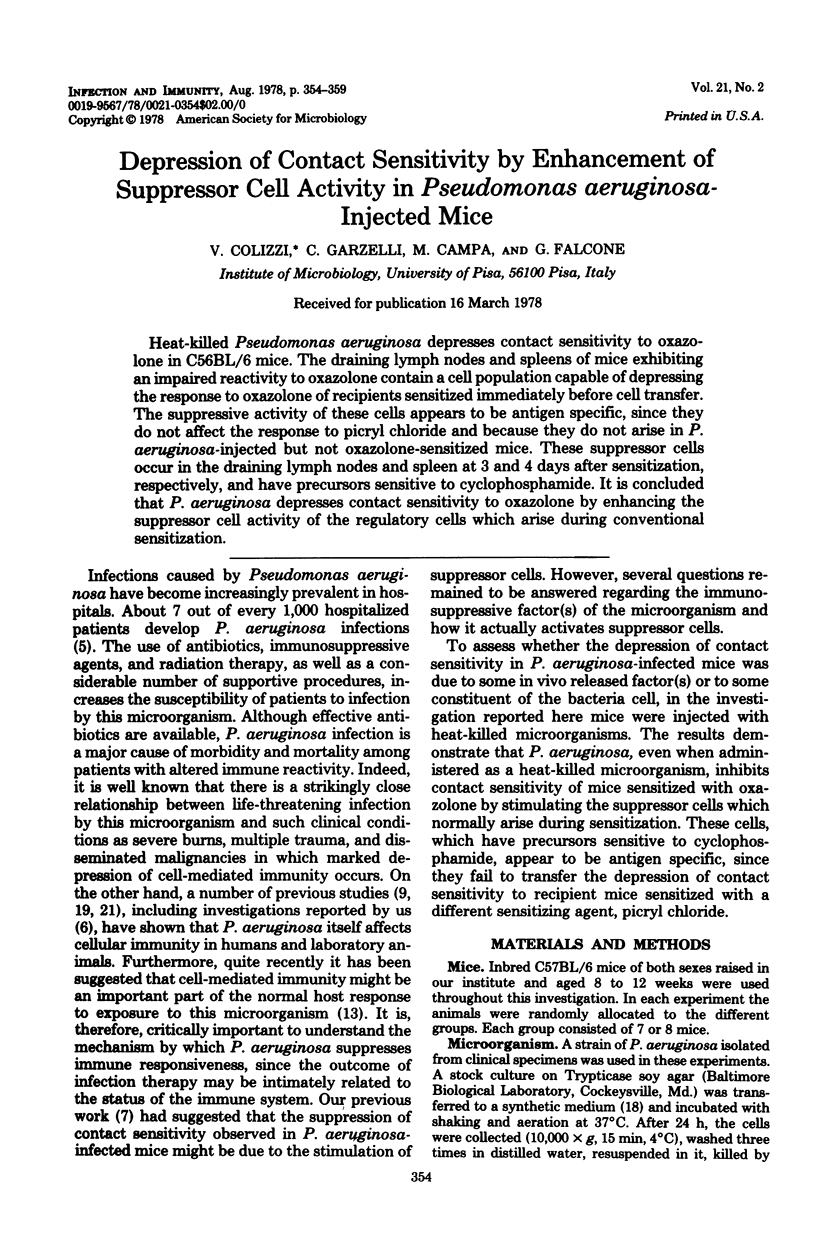
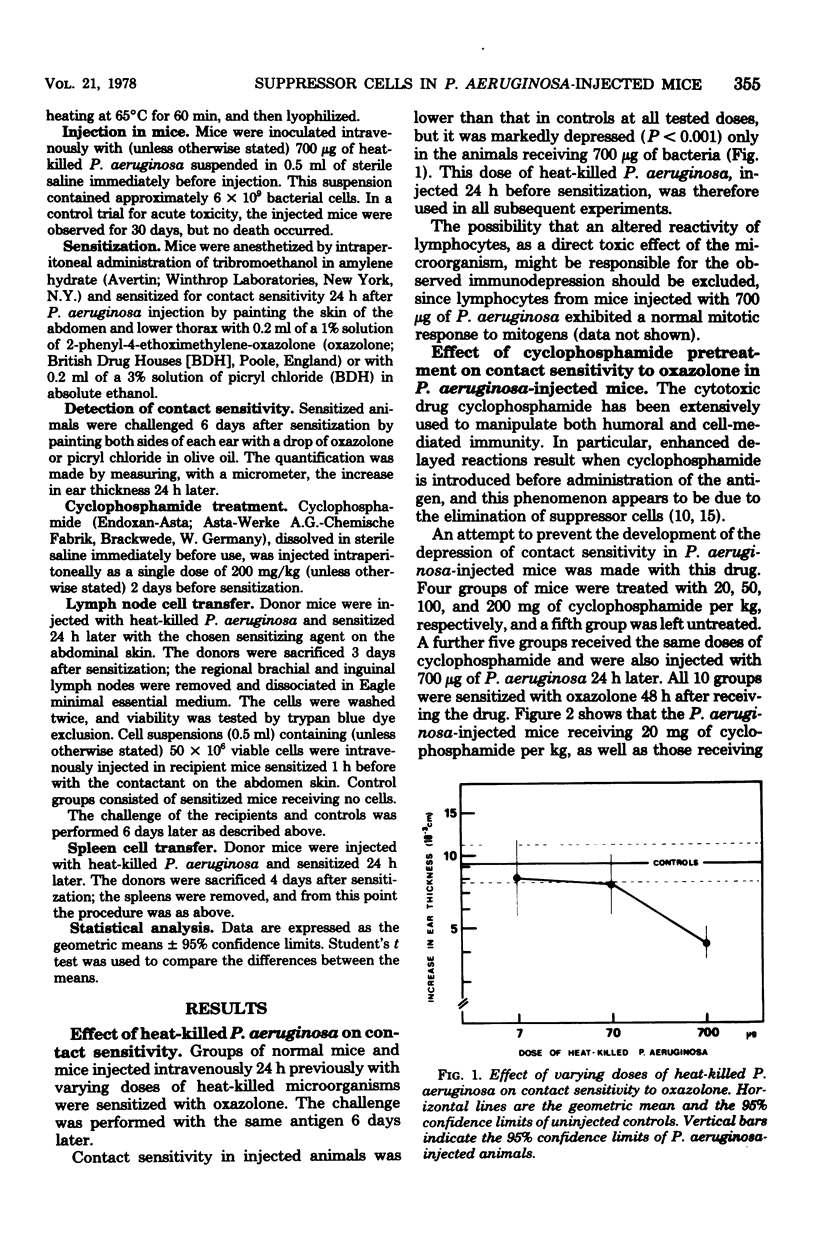
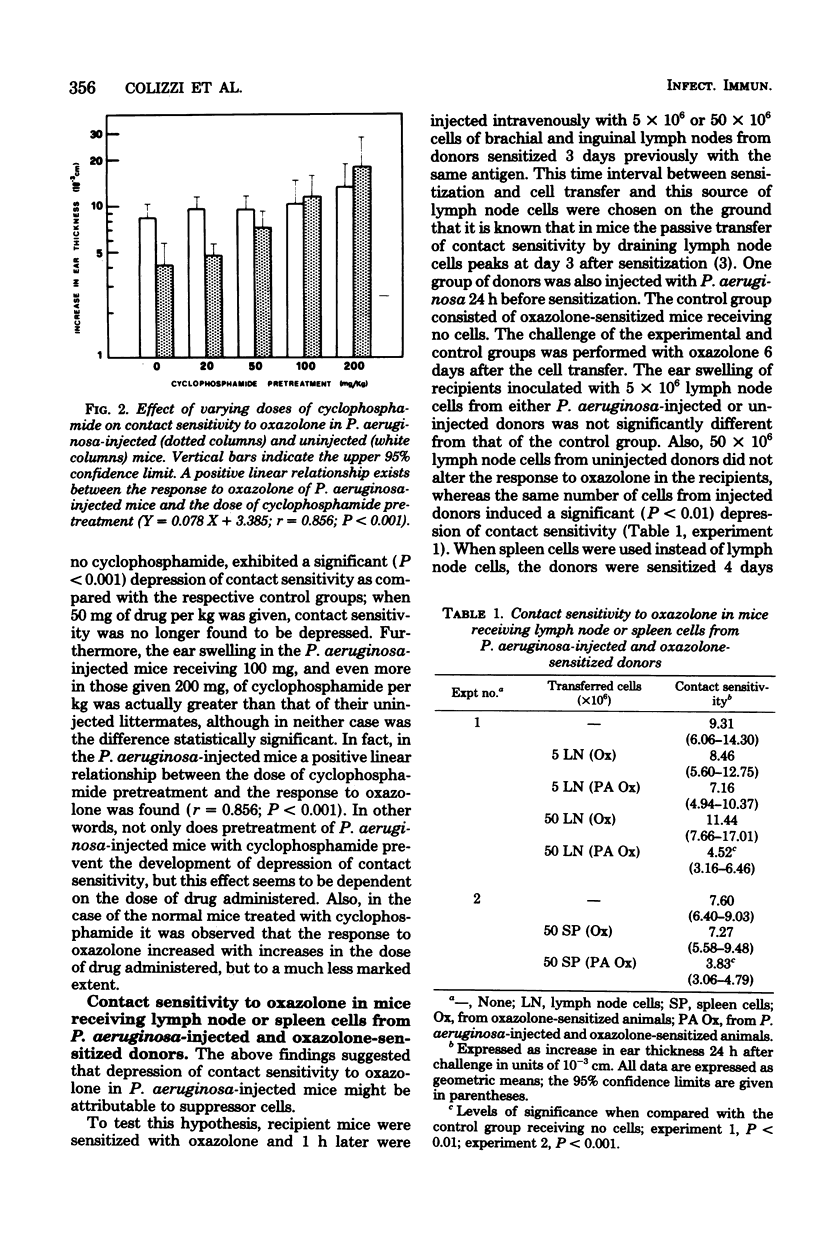
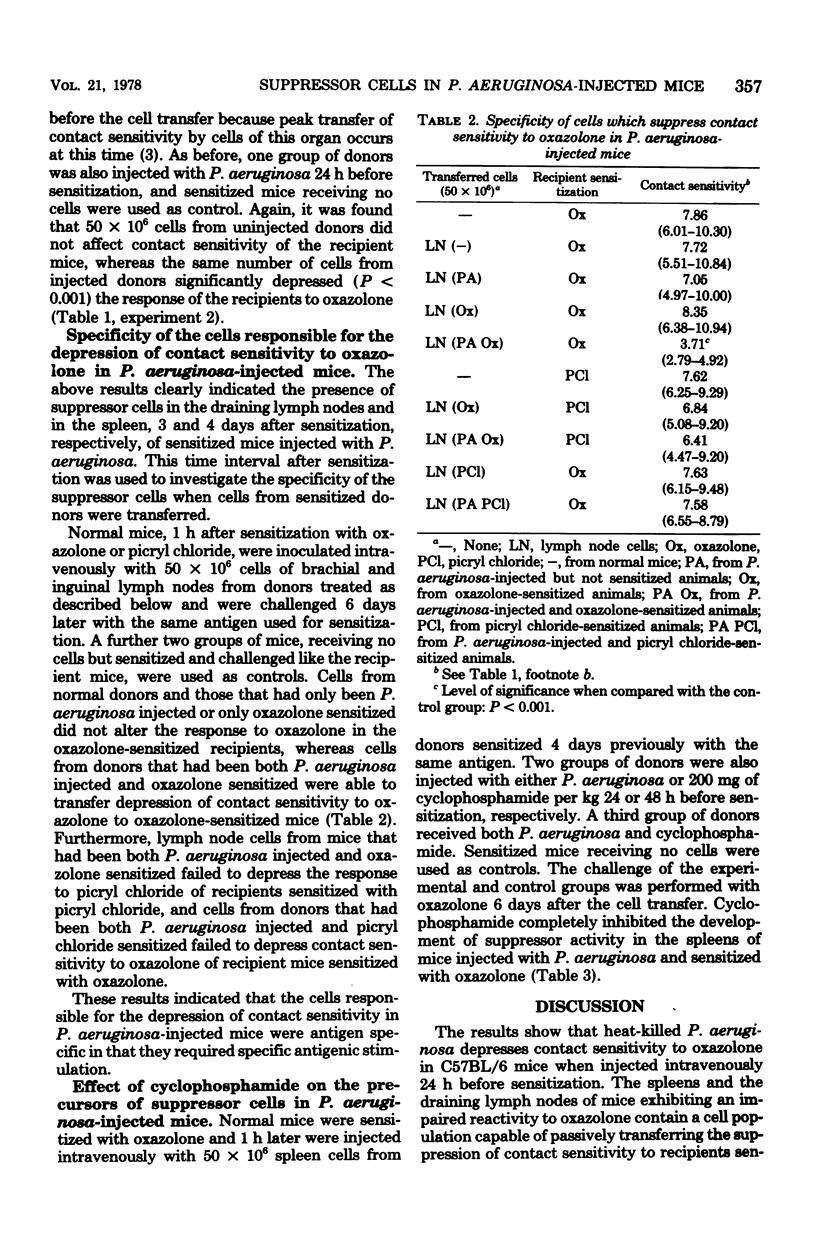

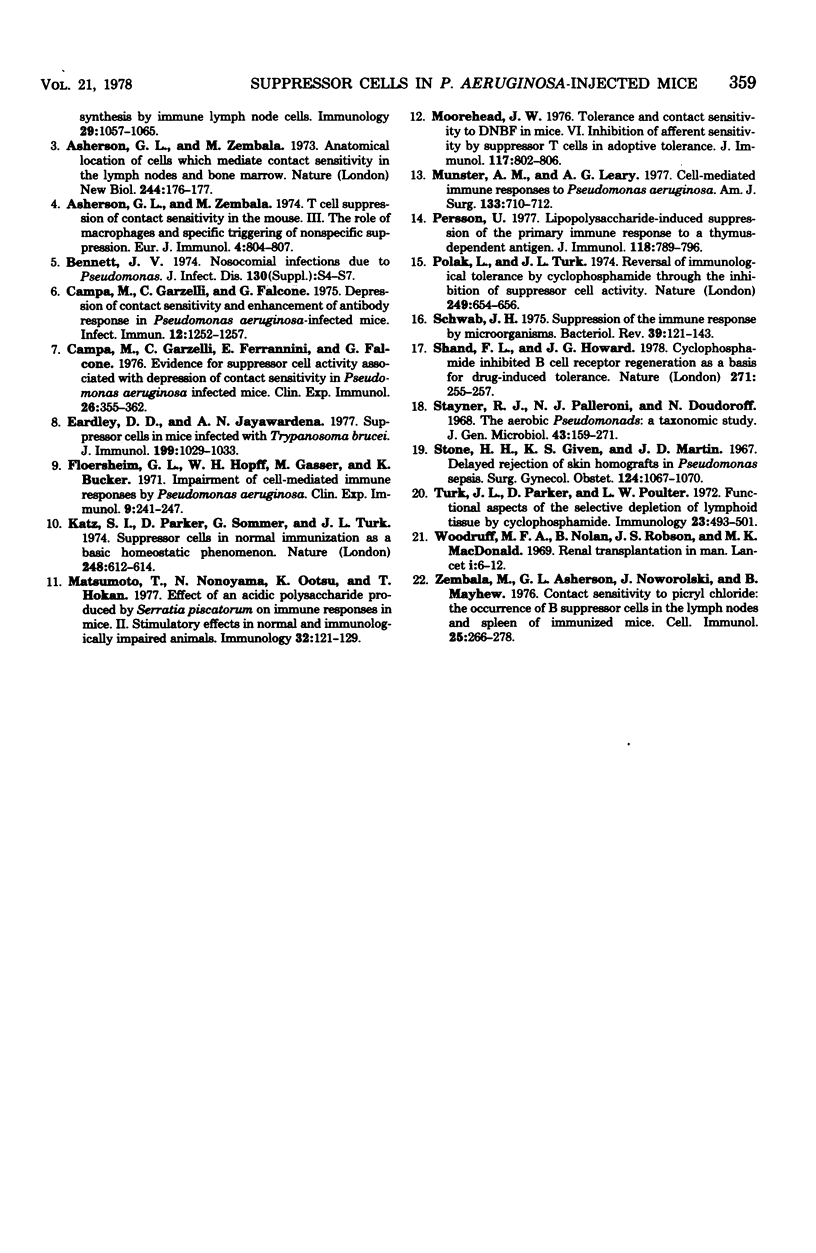
Selected References
These references are in PubMed. This may not be the complete list of references from this article.
- Asherson G. L., Wood P. J., Mayhew B. Control of the immune response. I. Depression of DNA synthesis by immune lymph node cells. Immunology. 1975 Dec;29(6):1057–1065. [PMC free article] [PubMed] [Google Scholar]
- Asherson G. L., Zembala M. Anatomical location of cells which mediate contact sensitivity in the lympho nodes and bone marrow. Nat New Biol. 1973 Aug 8;244(136):176–177. doi: 10.1038/newbio244176a0. [DOI] [PubMed] [Google Scholar]
- Bennett J. V. Nosocomial infections due to Pseudomonas. J Infect Dis. 1974 Nov;130 (Suppl)(0):S4–S7. doi: 10.1093/infdis/130.supplement.s4. [DOI] [PubMed] [Google Scholar]
- Campa M., Garzelli C., Falcone G. Depression of contact sensitivity and enhancement of antibody response in Pseudomonas aeruginosa-infected mice. Infect Immun. 1975 Dec;12(6):1252–1257. doi: 10.1128/iai.12.6.1252-1257.1975. [DOI] [PMC free article] [PubMed] [Google Scholar]
- Campa M., Garzelli C., Ferrannini E., Falcone G. Evidence for suppressor cell activity associated with depression of contact sensitivity in Pseudomonas aeruginosa infected mice. Clin Exp Immunol. 1976 Nov;26(2):355–362. [PMC free article] [PubMed] [Google Scholar]
- Eardley D. D., Jayawardena A. N. Suppressor cells in mice infected with Trypanosoma brucei. J Immunol. 1977 Sep;119(3):1029–1033. [PubMed] [Google Scholar]
- Floersheim G. L., Hopff W. H., Gasser M., Bucher K. Impairment of cell-mediated immune responses by Pseudomonas aeruginosa. Clin Exp Immunol. 1971 Aug;9(2):241–247. [PMC free article] [PubMed] [Google Scholar]
- Katz S. I., Parker D., Sommer G., Turk J. L. Suppressor cells in normal immunisation as a basic homeostatic phenomenon. Nature. 1974 Apr 12;248(449):612–614. doi: 10.1038/248612a0. [DOI] [PubMed] [Google Scholar]
- Matsumoto T., Nonoyama N., Ootsu K., Hokan T. Effect of an acidic polysaccharide produced by Serratia piscatorum on immune responses im mice II. Stimulatory effects in normal and immunologically impaired animals. Immunology. 1977 Feb;32(2):121–129. [PMC free article] [PubMed] [Google Scholar]
- Moorhead J. W. Tolerance and contact sensitivity to DNFB in mice. VI. Inhibition of afferent sensitivity by suppressor T cells in adoptive tolerance. J Immunol. 1976 Sep;117(3):802–806. [PubMed] [Google Scholar]
- Munster A. M., Leary A. G. Cell-mediated immune responses to Pseudomonas aeruginosa. Am J Surg. 1977 Jun;133(6):710–712. doi: 10.1016/0002-9610(77)90160-x. [DOI] [PubMed] [Google Scholar]
- Persson U. Lipopolysaccharide-induced suppression of the primary immune response to a thymus-dependent antigen. J Immunol. 1977 Mar;118(3):789–796. [PubMed] [Google Scholar]
- Polak L., Turk J. L. Reversal of immunological tolerance by cyclophosphamide through inhibition of suppressor cell activity. Nature. 1974 Jun 14;249(458):654–656. doi: 10.1038/249654a0. [DOI] [PubMed] [Google Scholar]
- Schwab J. H. Suppression of the immune response by microorganisms. Bacteriol Rev. 1975 Jun;39(2):121–143. doi: 10.1128/br.39.2.121-143.1975. [DOI] [PMC free article] [PubMed] [Google Scholar]
- Shand F. L., Howard J. G. Cyclophosphamide inhibited B cell receptor regeneration as a basis for drug-induced tolerance;. Nature. 1978 Jan 19;271(5642):255–257. doi: 10.1038/271255a0. [DOI] [PubMed] [Google Scholar]
- Stanier R. Y., Palleroni N. J., Doudoroff M. The aerobic pseudomonads: a taxonomic study. J Gen Microbiol. 1966 May;43(2):159–271. doi: 10.1099/00221287-43-2-159. [DOI] [PubMed] [Google Scholar]
- Stone H. H., Given K. S., Martin J. D., Jr Delayed rejection of skin homografts in Pseudomonas sepsis. Surg Gynecol Obstet. 1967 May;124(5):1067–1070. [PubMed] [Google Scholar]
- Turk J. L., Parker D., Poulter L. W. Functional aspects of the selective depletion of lymphoid tissue by cyclophosphamide. Immunology. 1972 Oct;23(4):493–501. [PMC free article] [PubMed] [Google Scholar]
- Woodruff M. F., Nolan B., Robson J. S., MacDonald M. K. Renal transplantation in man. Experience in 35 cases. Lancet. 1969 Jan 4;1(7584):6–12. doi: 10.1016/s0140-6736(69)90982-9. [DOI] [PubMed] [Google Scholar]
- Zembala M., Asherson G. L., Noworolski J., Mayhew B. Contact sensitivity to picryl chloride: the occurrence of B suppressor cells in the lymph nodes and spleen of immunized mice. Cell Immunol. 1976 Aug;25(2):266–278. doi: 10.1016/0008-8749(76)90117-9. [DOI] [PubMed] [Google Scholar]


